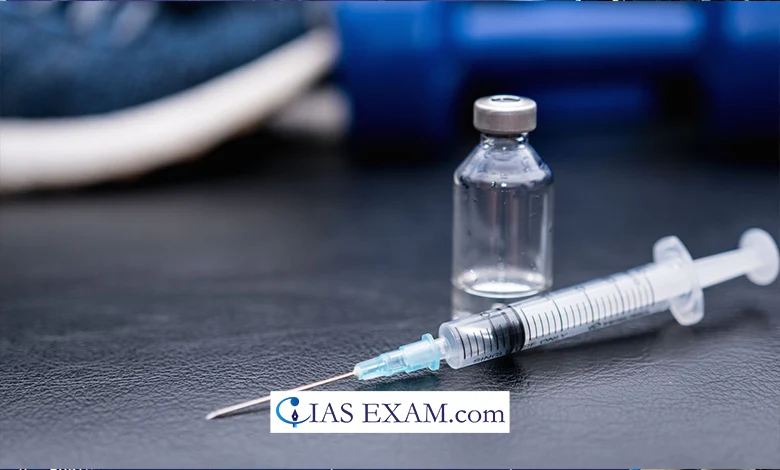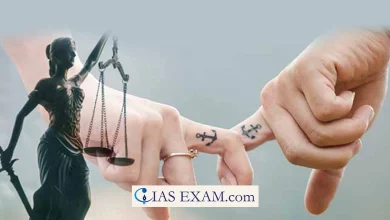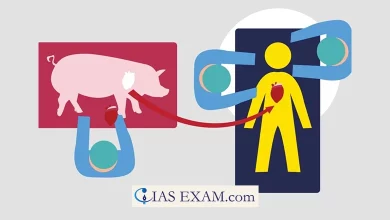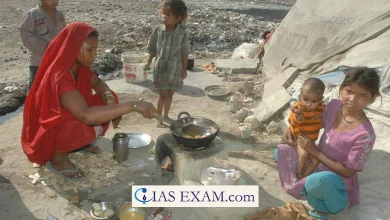
Context
India has emerged as the country with the highest number of doping offenders, according to the 2022 testing figures released by the World Anti-Doping Agency (WADA).
About
- 127 Indian Athletes tested positive for banned materials, constituting 3.26 percent of the sample size.
- Following India, South Africa ranked second, followed by Bangkok’s testing laboratory in third place. The United States and Qatar secured the fourth and 5th positions, respectively.
- India’s doping violations outnumber those of major sporting nations such as Russia, the United States, Italy, and France.
Doping and its Concerns
- Doping refers to the practice of using banned chemical substances, known as performance enhancing drugs (PEDs), by athletes.
Concerns of Doping
- Health Risks: Many performance-enhancing drugs and methods have severe health consequences along with cardiovascular issues, liver damage, hormonal imbalances, psychiatric disorders, and extended risk of cancer.
- Ethical Concerns: Doping violates the ideas of fair play in sports. It challenges the notion of fair competition and the concept that achievement should be achieved through hard work, dedication, and talent rather than through artificial enhancements.
- Negative Impact on Athlete Development: Doping creates unrealistic expectations for athletes and discourages them from focusing on training, skill development, and proper nutrition.
- Instead, they prioritize in search of shortcuts through doping to obtain achievement.
- Erosion of Trust and Integrity: Doping scandals damage the popularity and credibility of sports corporations, athletes, and the sporting events themselves.
Why is Doping on Rise in India?
- Pressure to Succeed: Athletes face enormous pressure from coaches, sponsors and enthusiasts, to achieve success.
- This pressure creates a strong incentive to apply doping substances or methods as a shortcut to attaining their goals.
- Winning brings with it several opportunities in India: from financial rewards to a government job.
- It sends a message to the younger generation that one must win at all costs, even if it means having to dope.
- Doping is pretty rampant amongst junior athletes, lots of whom are after money or government jobs.
- Role of Coaches: Often the coaches see the athletes as a way to gain more success, even if it’s done through unethical means.
- The guru-shishya culture in India too contributes to the athlete setting his faith in their coach.
- Fear of Failure: Athletes fear the effects of failure, inclusive of loss of repute, investment, or opportunities for future competitions.
Anti Doping Agency in India
- The primary organisation accountable for anti-doping efforts in India is the National Anti-Doping Agency (NADA).
- NADA was set up in 2005 under the Societies Registration Act to promote, coordinate, and display the doping control program in sports in India.
- NADA operates under the Ministry of Youth Affairs and Sports, Government of India.
- Indian Olympic Association (IOA) Medical Commission: The IOA Medical Commission is an advisory frame whose motive is to provide recommendation to the IOA Executive and office on matters associated with the health and wellness of athletes, and the scientific offerings to be furnished to the country wide team collaborating within the Olympic Games, Youth Olympic Games, Asian Games and Commonwealth Games.
Way Ahead
- The findings highlight the widespread issue of doping in the Indian sporting landscape and the urgent need to find ways of preventing the issue.
- It also requires a robust scientific and studies infrastructure in the country.
- Additionally, the figures shed light on the dearth of fundamental expertise about banned dietary supplements and drugs amongst Indian coaches, medical doctors, and physiotherapists related to teams across numerous disciplines.
- The decision to dope is motivated by a complex interaction of individual, social, economic, and environmental factors.
- Addressing doping calls for a multifaceted technique that consists of education, prevention, enforcement of anti-doping regulations, and support for clean athletes.
Source: The Indian Express





.png)



